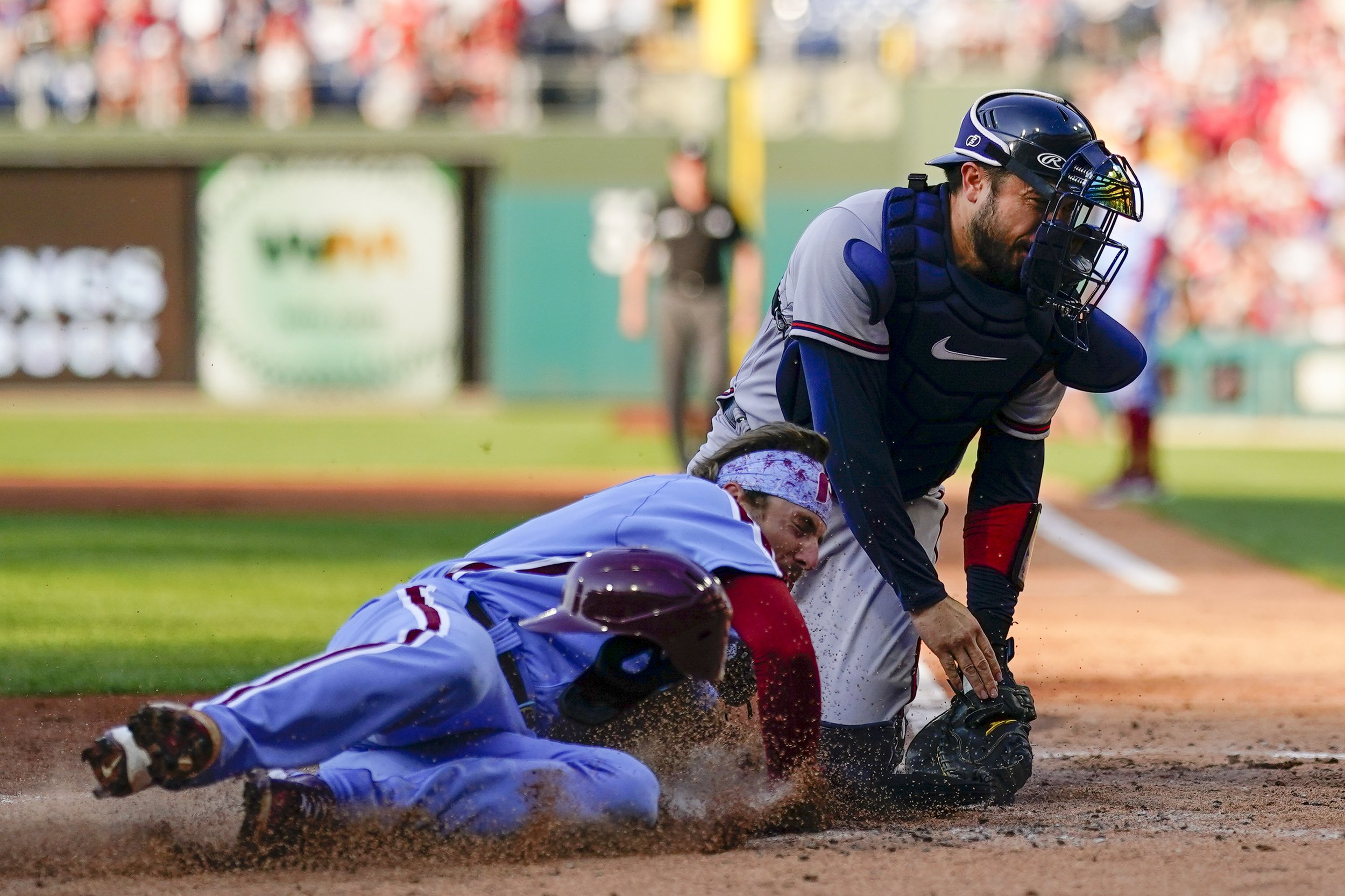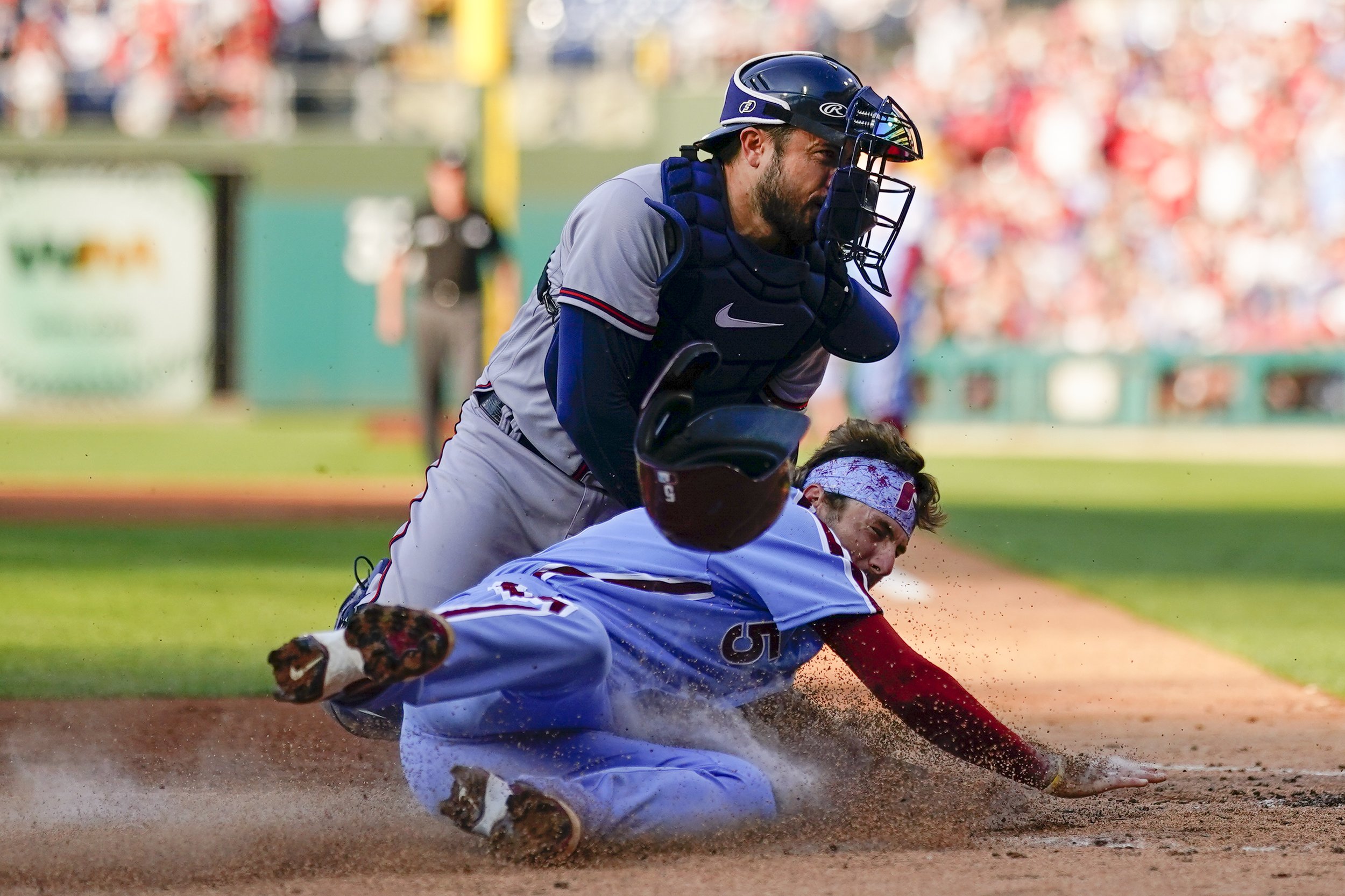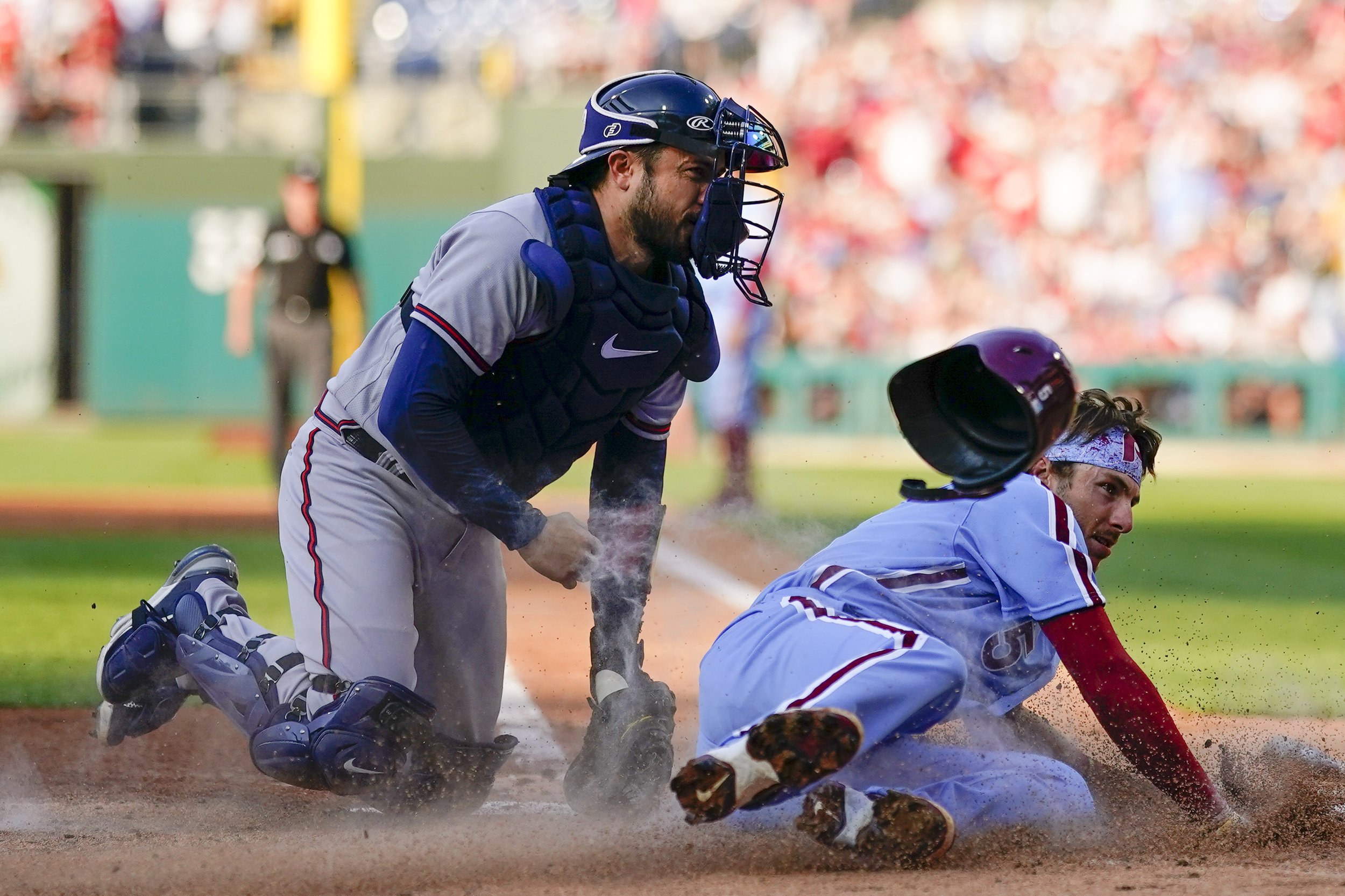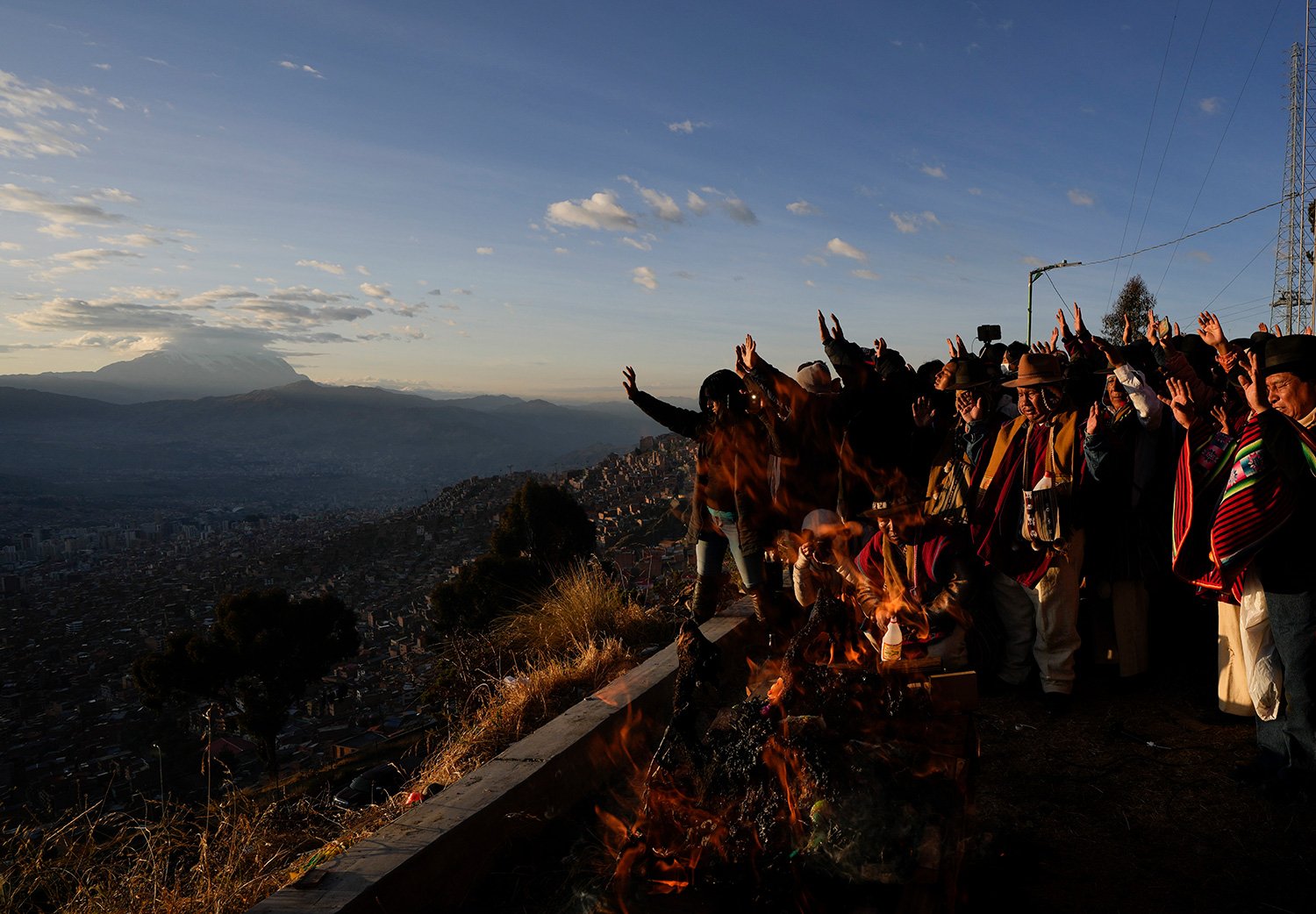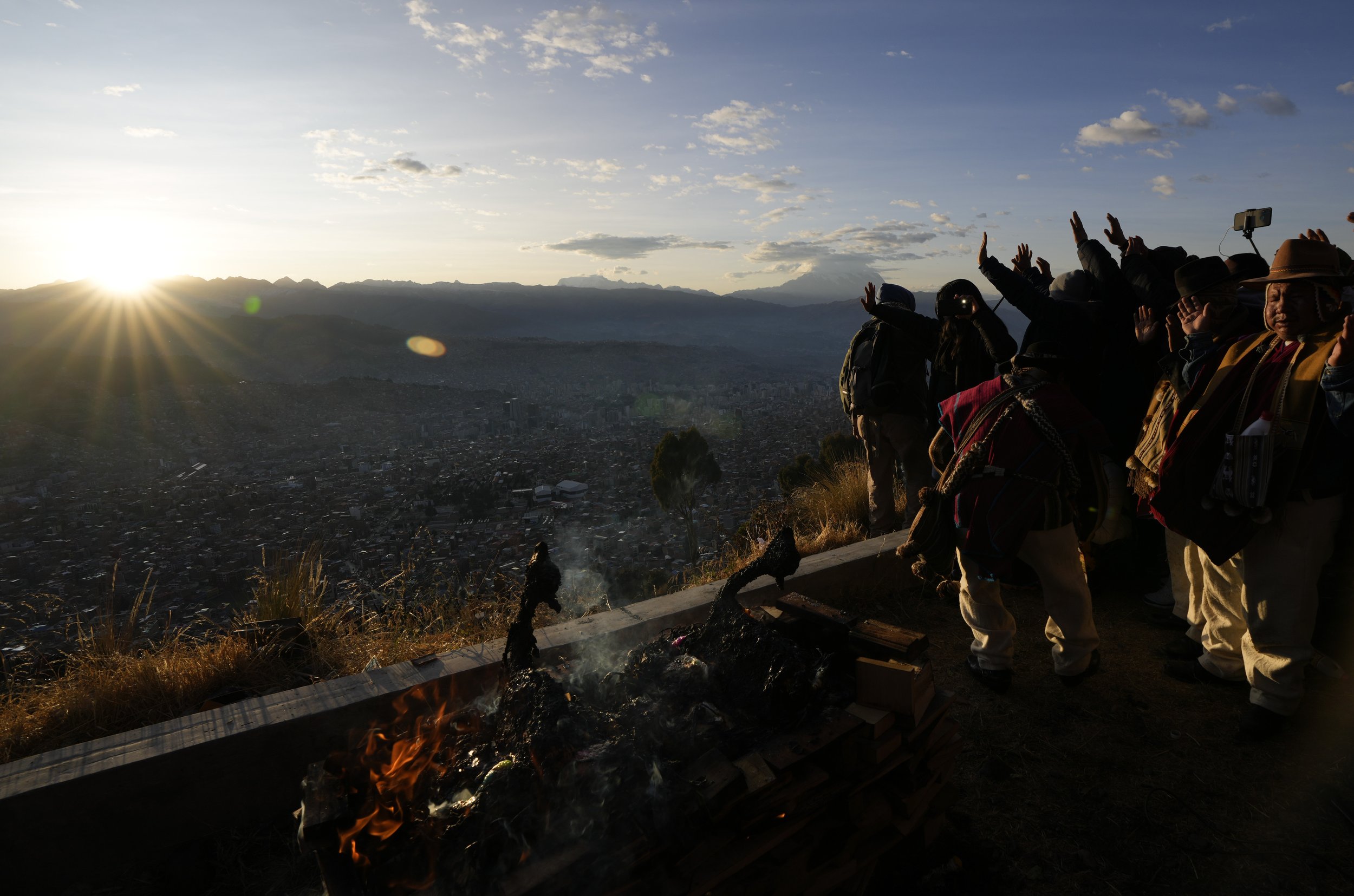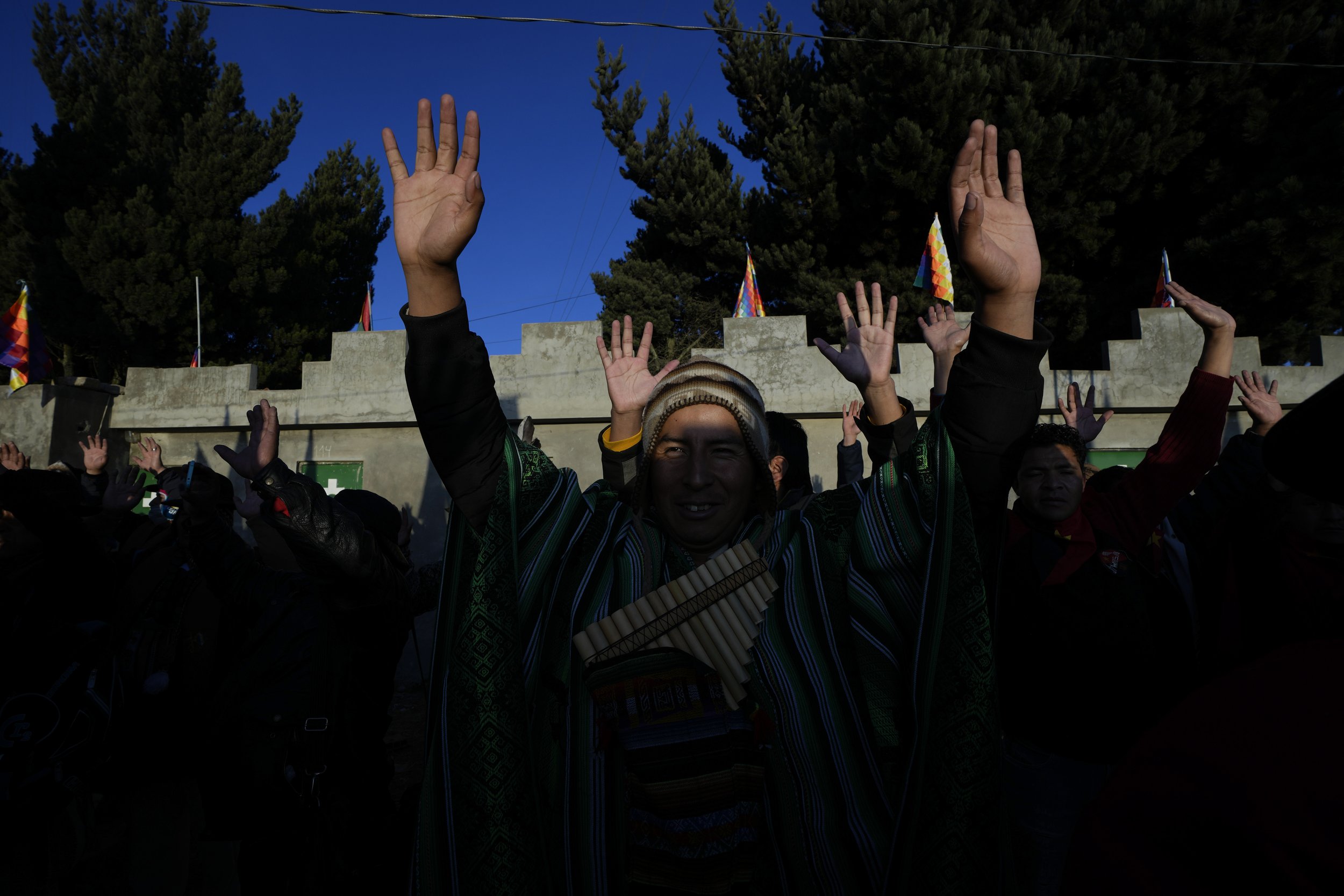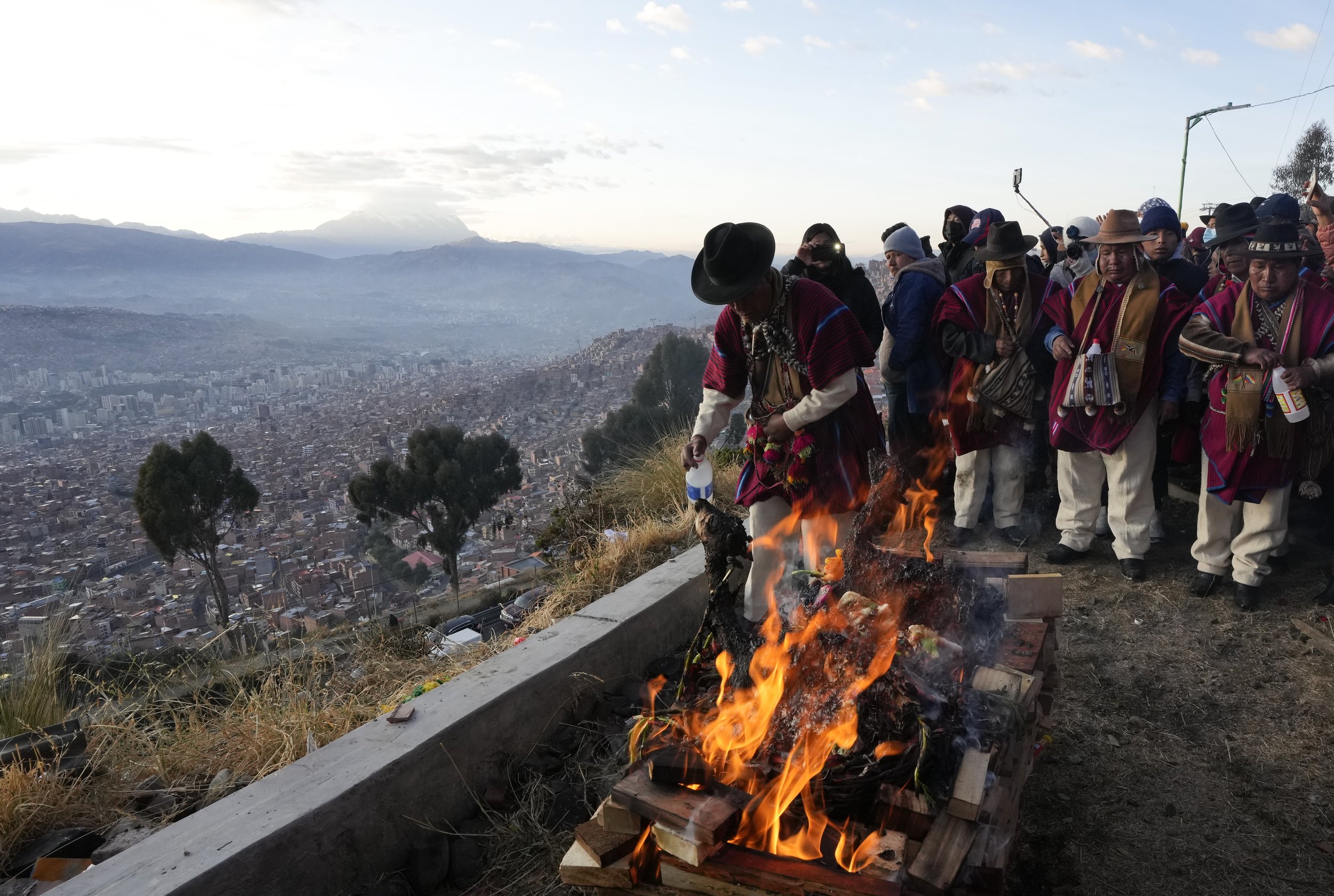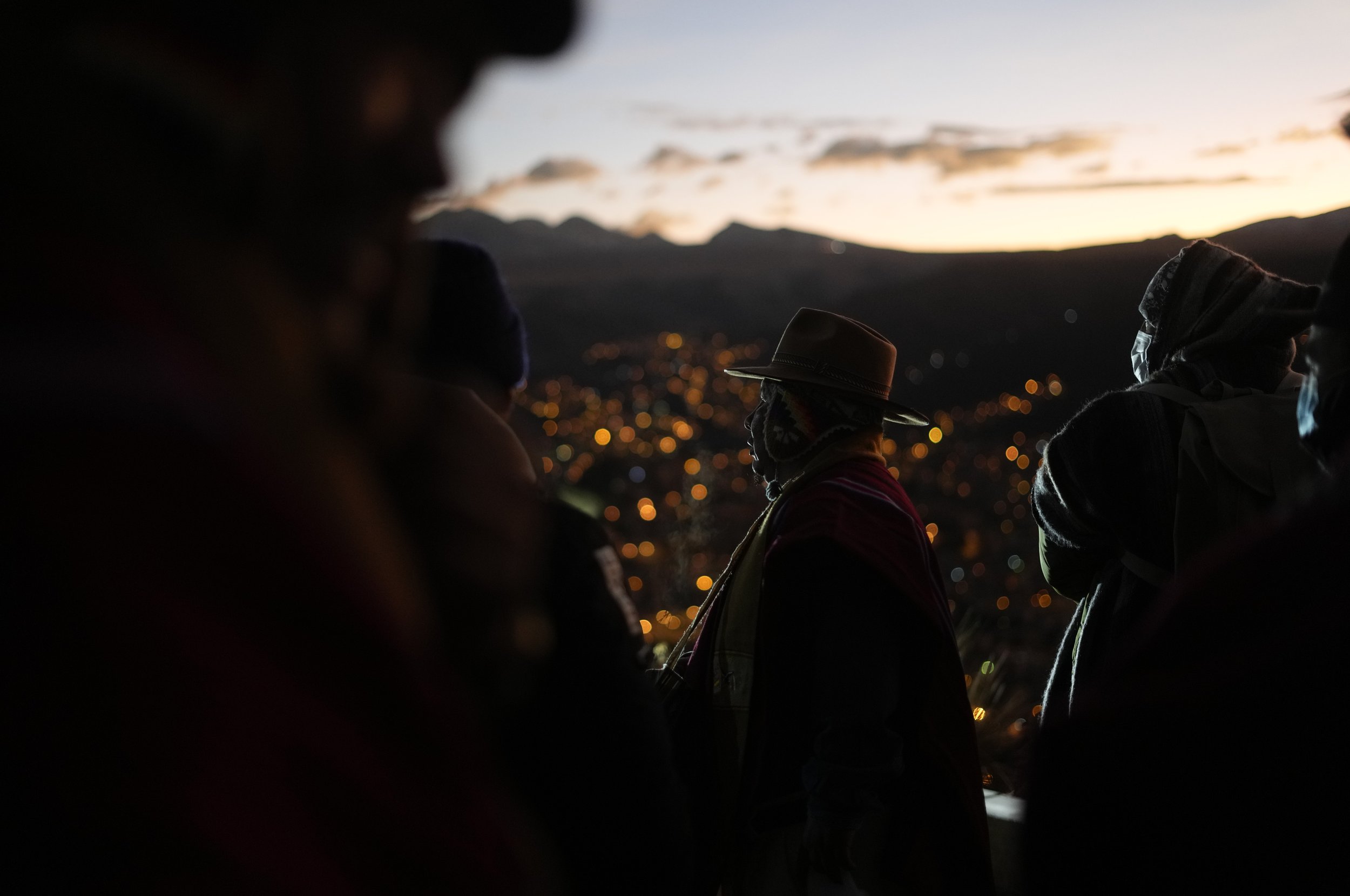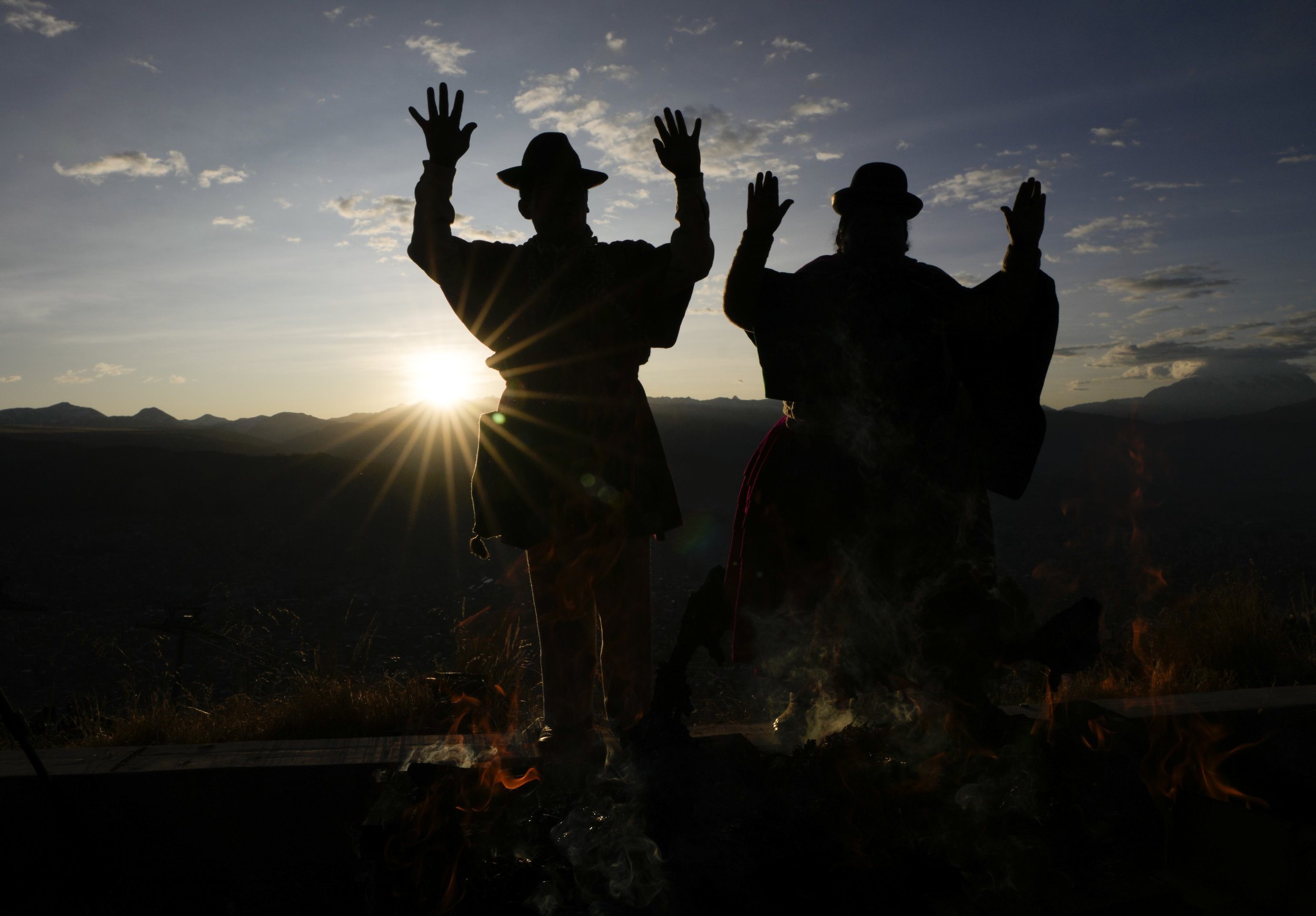Split Second: Editing down to the very best
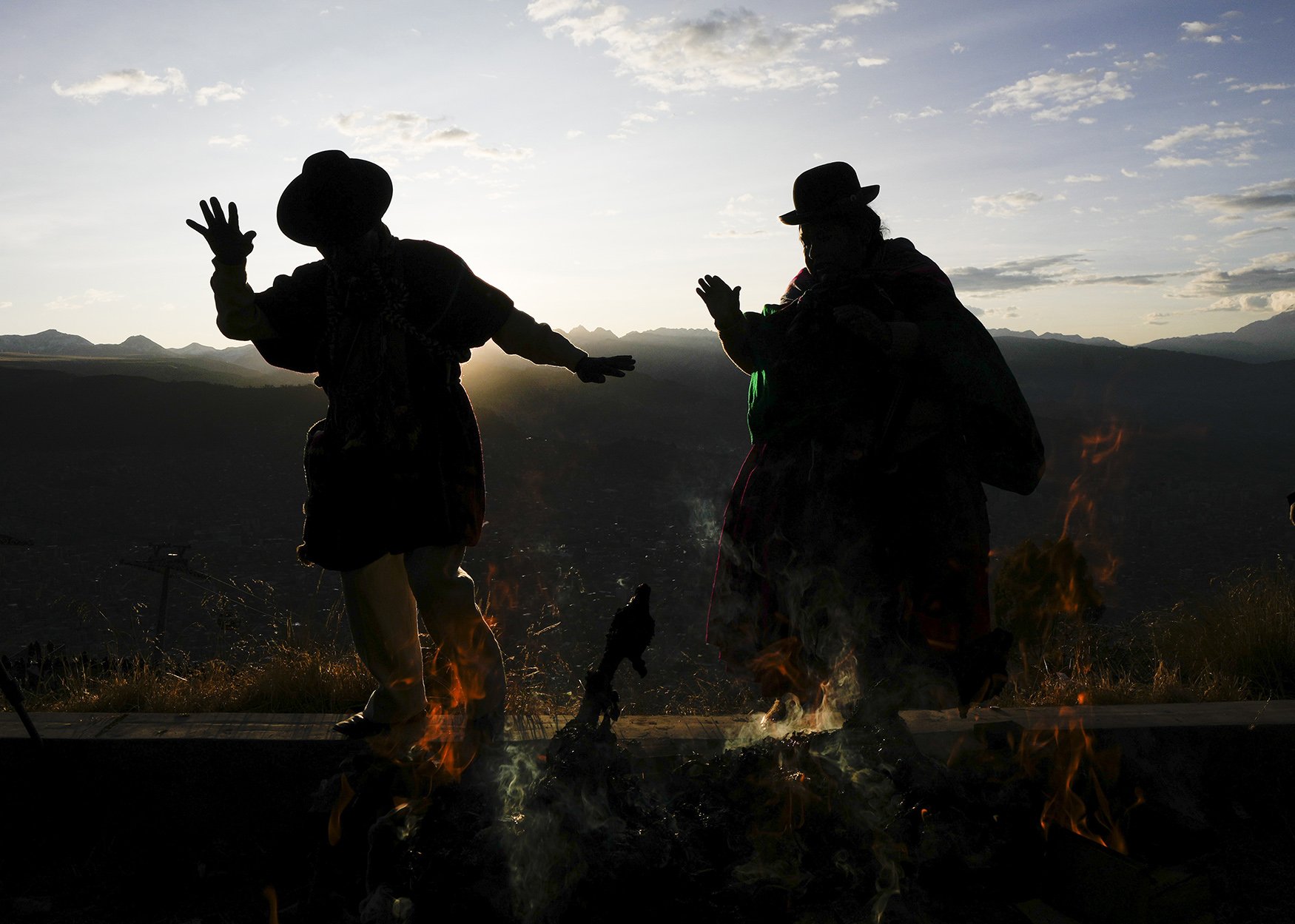
In this month’s installment of The Shot, let’s look at the process of photo editing. Some consider it a photo reporting step of comparable importance to photographing the moment itself. Like photography, effective editing is a confluence of technical skill and human insight.
Associated Press photographers Matt Slocum, based in Philadelphia, and Juan Karita, based in La Paz, Bolivia provide examples of their approaches to photo selection and editing. Baseball in Philadelphia and a celebration of the Andean New Year may seem unrelated, but narrowing down your production to the very best is a universal daily challenge.
A baseball player running to score collides at home plate with the catcher. Multiple frames are shot of the play. The equipment is capable of 20 frames a second. Which is THE FRAME? Why?
Matt Slocum
Baseball is tough. Games usually last three to four hours, and pictures can happen at any moment. It’s slow, until it isn’t. I usually shoot 1,500 to 2,000 frames a game — about 30 images get transmitted on the wire, and an additional 50-100 are later saved for stock.
We have to divide our attention between shooting and editing. Speed and efficiency matter, and getting images out faster means I can spend more time shooting. I bring my laptop and edit during the game from the photo wells. I download images from cards in between innings, which keeps them organized and the captions current. That makes it quicker later to find and caption images that might end up being important to the story of the game.
After an interesting play happens, I tag in my camera a few frames in the sequence; this prioritizes them when editing. When selecting images for the wire, I’m generally looking for peak-action, emotion, faces and storytelling moments. Having unique light, body language and interesting or clean backgrounds and the ball is a plus. Ideally, I can combine a few of these elements into each wire photograph.
I picked 2MS5309 because the players are slightly separated, the loose helmet is more visible and the flying dirt is at its peak. The faces never become completely clear, so my decision was more about the positioning of the players.
Philadelphia Phillies second baseman Bryson Stott cannot catch a single by St. Louis Cardinals' Juan Yepez during the third inning of a baseball game, Friday, July 1, 2022, in Philadelphia. (AP Photo/Matt Slocum)
Model: Sony a9II | Lens: Sony 400mm F-Stop: 2.8 | Shutter Speed: 2000 | ISO: 640
I selected 1MS8398 because it was a unique play with an intense face on Bryson Stott; this frame is the first in the sequence that clearly shows that he was unable to catch the ball. The first frame could be a catch, and in the subsequent frames, Stott’s glove obscures the ball.
In 1MS8513, it’s the first frame where Nolan Arenado has both feet off the ground and the ball is clear. It’s a fairly routine baseball photo, but it shows good movement and Arenado was a big part of the game story.
The Shot is a monthly series showcasing top photojournalism from staff photographers at The Associated Press. Each month, AP photographers will share the stories behind some of their iconic imagery.
Produced by AP News staff. The sponsor was not involved in the creation of this content.
Juan Karita
La Paz staff photographer Juan Karita talks photo selection when covering an Andean New Year ceremonial ritual.
In Bolivia, the celebration of the Andean New Year represents the renewed importance of the indigenous culture. The 2009 constitution recognizes these beliefs and incorporates them into official celebrations. Since then, the celebration has gained strength. And in Bolivia there are more than 30 ethnic groups, though some of them have dwindled.
Through my photos, I introduce the world to the Aymara and Quechua indigenous culture. When I photograph celebrations and festivities, I select photos that are visually expressive and active.
Aymaras hold up their hands to receive the first rays of sunlight during a New Year's ritual in El Alto, Bolivia, Tuesday, June 21, 2022. Aymara Indigenous communities are celebrating the 5,530th Andean New Year referred to as "Willka Kuti" or return of the sun in Aymara, coinciding with the southern hemisphere's June 21 winter solstice. (AP Photo/Juan Karita)
Model: Sony a1 | Lens: Sony 16-35mm F-Stop: 9 Shutter Speed: 200 | ISO: 100
XJK101: In the image I selected, I moved more to the center during the sunrise, to compose the people with their hands raised, the mountains and the backdrop of the city of La Paz visible. I used the 16-35mm lens because I didn’t have much space to move, I used f9 to have depth of field of the participants and the background. I cropped the right side to reduce distraction.
Aymaras hold up their hands to receive the first rays of sunlight during a New Year's ritual in El Alto, Bolivia, Tuesday, June 21, 2022. Aymara Indigenous communities are celebrating the 5,530th Andean New Year referred to as "Willka Kuti" or return of the sun in Aymara, coinciding with the southern hemisphere's June 21 winter solstice. (AP Photo/Juan Karita)
Model: Sony a1 | Lens: Sony 16-35mm F-Stop: 9| Shutter Speed: 200| ISO: 100
XJK102: In this shot, I wanted to highlight their hands and looking towards the rising sun. I found the situation interesting and continued to shoot. In the image I selected, I cropped in because I think it's most interesting to have a close up of their hands.
An Andean religious leader sprinkles liquor into a bonfire of burnt offerings during a New Year's ritual in El Alto, early Bolivia, Tuesday, June 21, 2022. Aymara Indigenous communities are celebrating the 5,530th Andean New Year referred to as "Willka Kuti" or return of the sun in Aymara, coinciding with the southern hemisphere's June 21 winter solstice. (AP Photo/Juan Karita)
Model: Sony aI | Lens: Sony 16-35 F-Stop: 9 | Shutter Speed: 200 | ISO: 1000
XJK103: The frame I chose is a more impressive moment, looking like the man is engaged with the fire.
An Andean spiritual leader attends a New Year's ritual in El Alto, Bolivia, Tuesday, June 21, 2022. Aymara Indigenous communities are celebrating the 5,530th Andean New Year referred to as "Willka Kuti" or return of the sun in Aymara, coinciding with the southern hemisphere's June 21 winter solstice. (AP Photo/Juan Karita)
Model: Sony a1 | Lens: Sony 50mm F-Stop: 1.8 | Shutter Speed: 125 | ISO: 2000
XJK105: In the frame I selected, I moved a little closer to the man while photographing, to highlight only his face and the lights behind.
Aymaras hold up their hands to receive the first rays of sunlight during a New Year's ritual in El Alto, Bolivia, Tuesday, June 21, 2022. Aymara Indigenous communities are celebrating the 5,530th Andean New Year referred to as "Willka Kuti" or return of the sun in Aymara, coinciding with the southern hemisphere's June 21 winter solstice. (AP Photo/Juan Karita)
Model: Sony a1 | Lens: Sony 16-35mm F-Stop: 14 | Shutter Speed: 400 | ISO: 100
XJK104: In this shot, the couple is dancing after receiving the sun, a symbol of joy. I chose the silhouettes of their bodies because of the movement and the contrast with the sky. It shows the idea of movement better. Also, I cropped the photo to eliminate distraction.
Spotlight is the blog of AP Images, the world’s largest collection of historical and contemporary photos.
Produced by AP News staff. The sponsor was not involved in the creation of this content.



